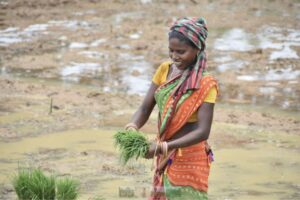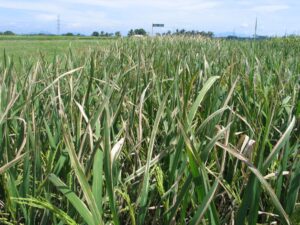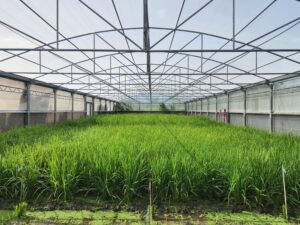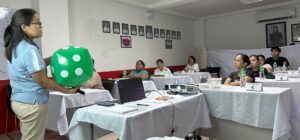Experts have become concerned about the long-term sustainability of conventional tillage crop production systems. In the past decades, a variety of economic, environmental, and social problems have been plaguing these practices, including labor shortages, diminishing water and energy resources, deteriorating soil health, decreasing farm profitability, and other issues related to climate change.
Conservation agriculture (CA), on the other hand, can potentially address the challenges to the future of agriculture and food security. CA is a set of soil management practices that includes minimal soil disturbance, soil residue management, and crop diversification. These practices were presented during the regional workshop on climate-smart agriculture technologies in Asia on 2-4 June in Muntinlupa City.
Increased soil tillage or ploughing results in poor soil health or soil degradation. To keep soil disturbance to a minimum, zero-tillage technologies such as the laser leveller, turbo happy seeder, and zero-till relay planters, were developed and tested in selected sites in the Indo-Gangetic Plains in northern India.
Research on the energy dynamics of wheat production under different tillage techniques demonstrate that zero-tillage technologies have the highest energy-use efficiency and the lowest consumption of water and fuel. There is also evidence that zero- tillage technologies produce lower emission of greenhouse gases.
“To ensure that these zero-till technologies are farmer-friendly and will be disseminated easily, we tested these technologies through on-farm trials at the Bourlaug Institute for South Asia,” says Parvinder Singh, a research scientist from the International Maize and Wheat Improvement Center. “They were also tested in farmer-participatory trials in selected climate-smart villages.”
The farm machinery needed for zero-tillage need not be costly, according to Dr. Singh who leads the research on climate-smart agricultural technologies such as zero-tillage with residue retention, relay planting, water- and nutrient-smart practices. Dr. Singh’s team worked with local manufacturers in developing affordable machines that will be readily available for market distribution once they have been tested.











